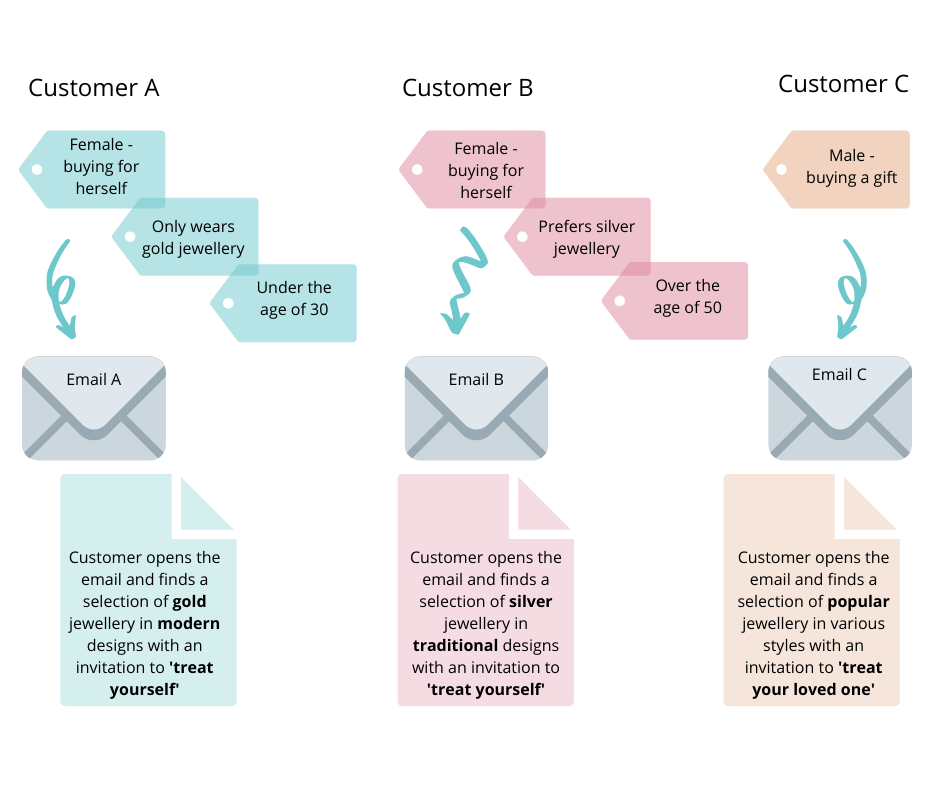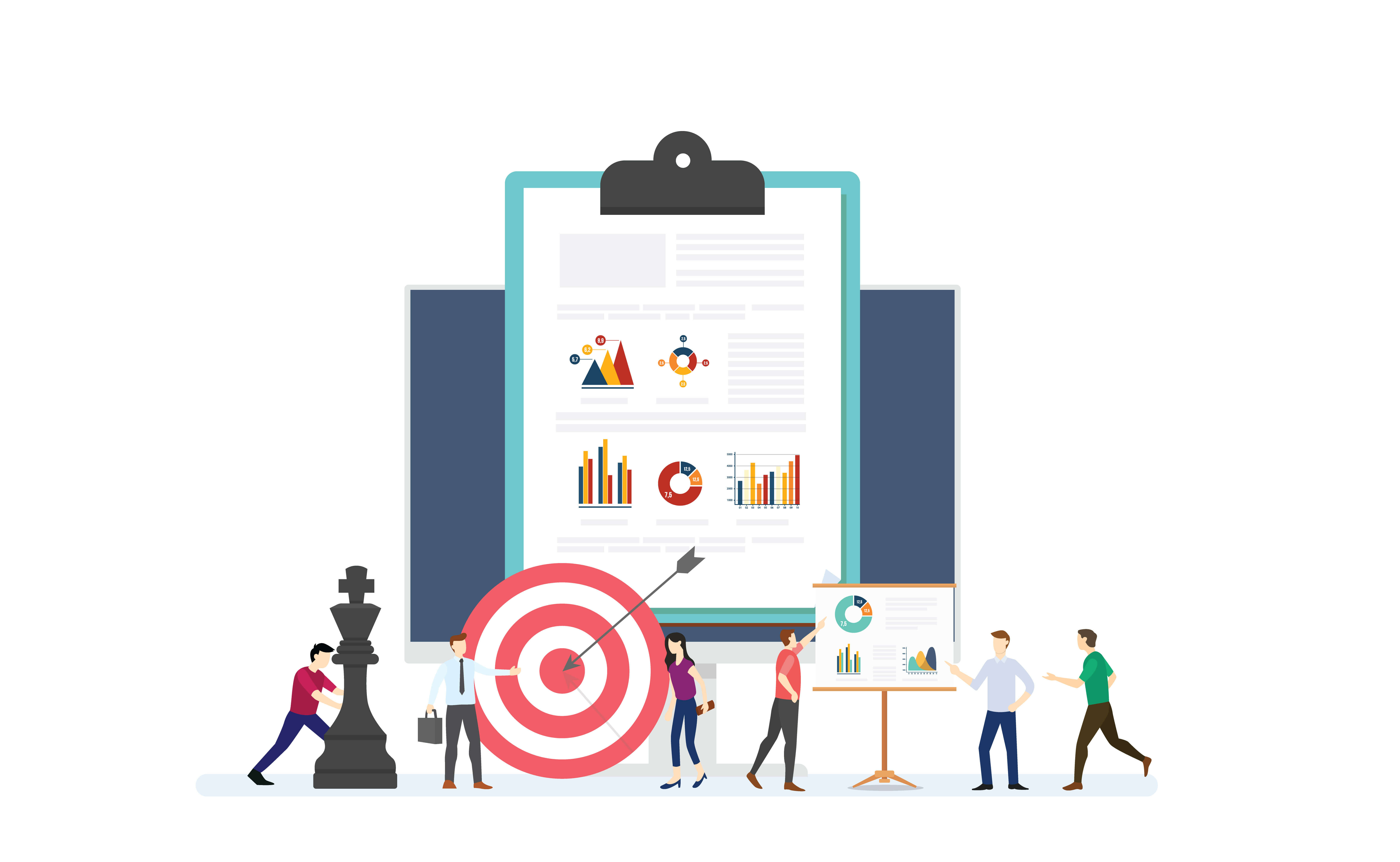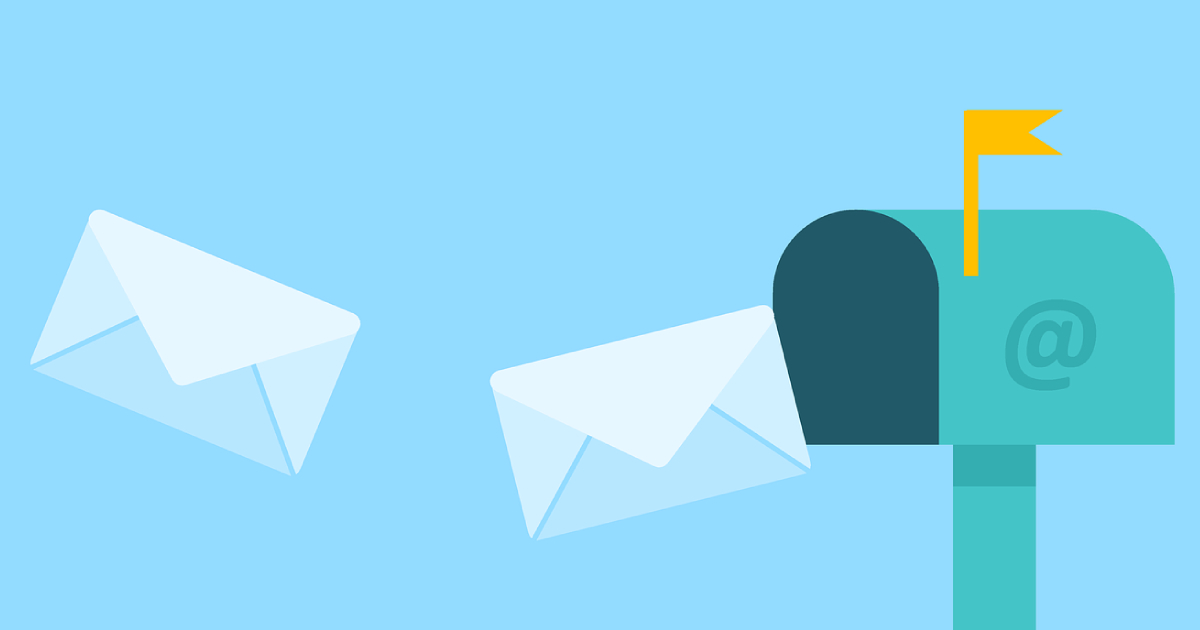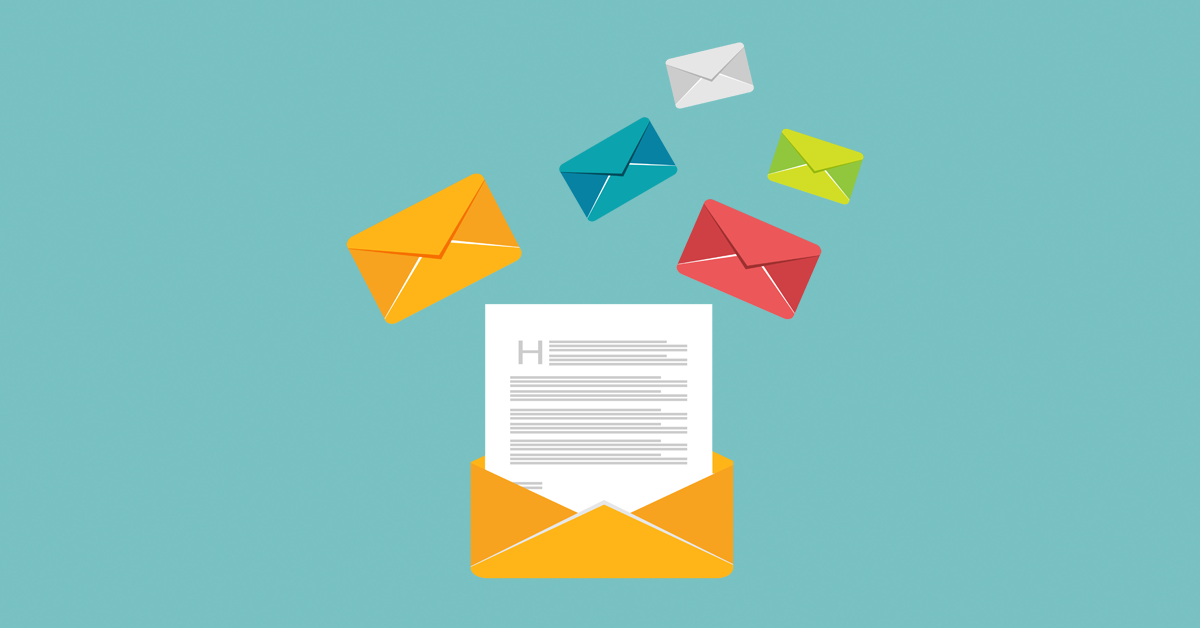For your marketing messages to be truly effective, they need to reach the right people. And segmentation helps you achieve that.
It’s the practice of dividing your audience into segments based on data, including demographics, preferences, behaviour and geography, and then speaking to each of those segments directly.
It enables you to provide your audience with more highly personalised emails and tailored content that’s more relevant to them. And the more relevant an email is to a subscriber, the more likely that email will drive the results that matter most to your business. Whether that’s sales, signups or downloads.
But despite the fact that segmentation is so effective at converting subscribers into customers, it’s often overlooked by email marketers.
So if you need convincing, here are three great reasons why you should use segmentation in your email marketing.

Your customers are all different and one size doesn’t fit all
To really understand why segmentation works so well, you need to remember that each and every one of your customers is different. They have different needs, different preferences. They might be different ages and located in different parts of the world.
All of these differences add up to mean that the emails you send will, in all likelihood, only be relevant to a small portion of your audience.
Let’s say you’re an online jewellery store specialising in women’s jewellery. The majority of your audience is likely to be female but you might also have a few men on your mailing list who want to buy a gift for their partner. Their needs will be different.
Within your female audience, some women might prefer gold jewellery while others prefer silver. Their preferences are different.
Segmenting this group of women even further, their age might mean that some favour modern designs while others like traditional designs. Their preferences are different again.
By thinking about how your customers differ and how your product or service offering suits them individually, you can tailor your email content to match.
This diagram shows how you might do just that using our jewellery store example:

Instead of sending the one same email to everyone on your mailing list, you create three variations of that email to talk to three different customer groups individually. Do this and you’ll be rewarded with improved campaign performance and better relationships with your customers.
💡 Bonus tip
The next time you prepare an email campaign, write down a few ideas of how you could segment your audience and tailor your content to suit. Use the diagram above as a guide and see how targeted you can get with your customer data.
How many emails do you end up with?
If you need more inspiration, use these ideas to effectively segment your mailing list.

Your email campaigns will perform better and you’ll get better results
There are many ways to measure the success of your email campaigns – open rate, click-through rate and conversion rate chief among them.
Incredibly, segmentation improves the performance of all three of these metrics. So it’s perhaps the most gratifying reason why you should use segmentation in your email marketing. Here’s how it works:
Improved open rates
If you’re tailoring the content in your emails to speak to customers on a more individual basis, your subject lines will naturally follow suit.
Customer A in our jewellery business example might receive an email with the subject line:
‘Treat yourself with these fashionable gold rings and bracelets’
While Customer C receives:
‘Treat your loved one with our popular range of gold and silver jewellery’.
Before these customers have even opened the email, they know that the email is relevant to them based on their particular demographics and preferences. That means they’re more likely to open your email and read what’s inside.
Average open rates vary by industry and can range anywhere between 7.52% and 19.99%, according to a recent statistics compilation by SmartInsights. But using segmentation, you could see an average 15% higher open rate for your emails.
💡 Bonus tip
Once you’ve got a few different customers in mind for your next email, write down a selection of subject lines to match. Use the CoSchedule Headline Analyzer to help craft better subject lines and test out variations.
Improved click rates
Once you’ve got more people opening your segmented emails, you’ll find that more of those people are clicking on the links inside those emails. Why?
Because you’ve taken the time to tailor the content for individuals. What they find inside is of greater interest to them than what would be inside an email sent to everyone on your mailing list.
According to benchmark data from GetResponse, the average increase in clicks on segmented emails is 1.37%. That might not seem like a huge number. But when the baseline is 2.98%, an increase of 1.37% means roughly 1.5 times more clicks.
And more clicks mean more traffic to your website. Which is where you’re going to make more conversions.
Improved conversion rates
Whether a conversion for your business is a page view, a resource download or a sale, getting more eyes on your website is going to increase your chances of having that conversion made.
With a segmented mailing list, you’re effectively sending a highly qualified audience to your website. By knowing what they want and promoting that in your email, your audience is nicely warmed up by the time they hit your website.
What they find on your website via the links in your email is more relevant to them. So they’re more likely to make a purchase, or hit the download button and read the page they’ve been sent to.
In one case study, a clothing retailer increased revenue by 141% by using segmentation to target men and women with different email content. Imagine what difference segmentation could make to your business!
Improved unsubscribe rate
One of the top three reasons customers unsubscribe from mailing lists is because emails are not relevant. But if you’re providing subscribers with relevant offers and content, they’re less likely to unsubscribe.
A good unsubscribe rate is considered to be anything below 0.5%. If your unsubscribe rate is above 0.5%, segmentation could be the key to reducing that number and keeping more contacts on your mailing list.

You’ll build better relationships with your customers
On average last year, 293.6 billion emails were sent and received each day. That’s a mind-boggling number!
And with an estimated 5.6 billion active email accounts, that means an average of 52 emails per day. Yep – your customers are receiving dozens upon dozens of emails every day. Which means stiff competition in the inbox.
The best way to win that competition is with personalisation. And by providing customers with content that’s actually relevant to them. This builds trust in your brand and helps develop long-term relationships.
Engaging with your customers on a more personal level is a great way to build brand loyalty. Customers will be more receptive to your messaging if you can show that you understand their needs and wants. They’ll view you more favourably and will look forward to receiving your emails.
Using segmentation effectively might mean your contacts end up receiving fewer emails from you. Which can be a scary prospect for marketers but it’s welcomed by subscribers.
Put yourself in your customers’ shoes – would you rather receive a weekly email that’s irrelevant or just one email a month that speaks to you directly?
And as a marketer, would you rather send weekly emails to customers that go unopened or just one email a month that gets opened and results in a sale?
Final thoughts
The only way to see if segmentation works for you is by putting it into practice. Take some time to think about all the ways in which you can segment your mailing list. How you can separate out groups of customers.
And then whenever you start preparing an email campaign, draft a few different versions to match your segments.
Keep track of the results and compare – how does the open, click and unsubscribe rate vary between segmented groups and mass mailouts?
The results will no doubt pleasantly surprise you. And you’ll have all the proof you need to make segmentation an ongoing tactic in your email marketing.
Let us know how you get on using segmentation in your email marketing. Keep in touch and leave us a comment.





No Comments
Leave a comment Cancel